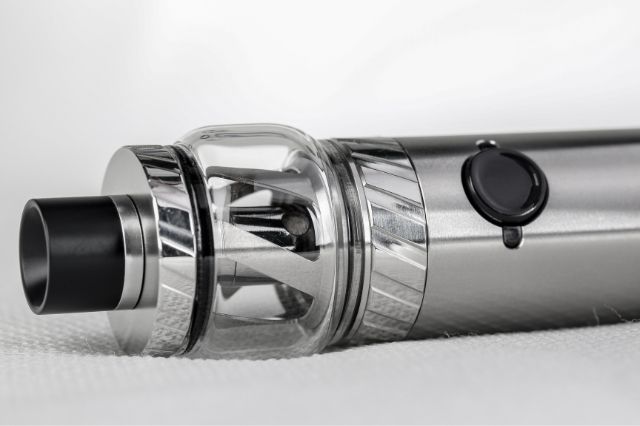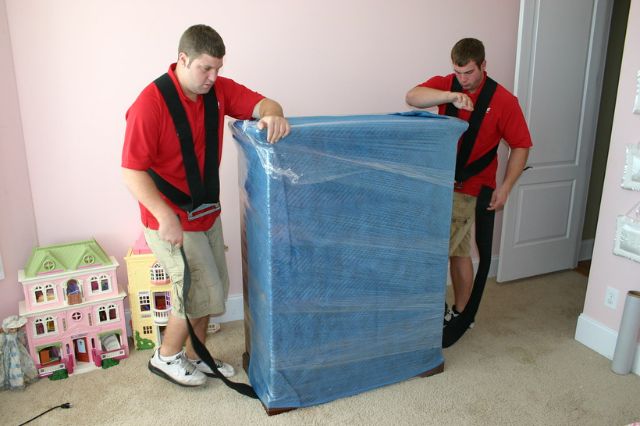Lifesytle
Leaky Vape Pen? Here’s What You Need to Know and How to Fix It


Vaping has become a popular trend among many individuals worldwide. With the rise in vaping, vape pens have become the most preferred method of consumption. However, one common issue with vape pens is leakage. If you’ve experienced a leaky vape pen, then you know how frustrating it can be. It can lead to wasting your e-juice, making a mess, and even damaging your device. In this article, we will discuss why vape pens leak and what you can do to prevent or fix it.
One of the most common reasons for vape pen leakage is overfilling the tank. When you overfill the tank, the e-liquid can seep into the airflow holes, causing leakage. It’s important to note that vape tanks have a maximum fill line that should not be exceeded. To avoid overfilling your tank, you should take your time and fill it slowly, paying close attention to the maximum fill line.
Another cause of vape pen leakage is a faulty coil. The coil is responsible for heating the e-liquid, and if it’s not functioning correctly, it can cause leakage. If you’re experiencing leakage, you may want to check your coil for any signs of damage. If the coil is damaged, you should replace it immediately.
In addition to overfilling and faulty coils, the age of the tank or the device could also cause leakage. Over time, tanks can develop cracks or wear and tear, leading to leakage. If you notice any cracks or damage to your tank, you should replace it immediately. Similarly, if your device is old and worn out, it may be time to upgrade to a new vape.
Fortunately, there are some steps you can take to prevent or fix vape pen leakage. One way to prevent leakage is to ensure that you’re using the correct e-liquid for your device. Different devices are designed to work with specific e-liquids, so it’s important to check the compatibility before using any e-liquid. Using the wrong e-liquid can cause leaks and potentially damage your device.
Another way to prevent leakage is to clean your device regularly. E-liquid residue can build up over time and cause leaks. To clean your device, disassemble it and wash the tank, coil, and mouthpiece with warm water. Be sure to dry all the components thoroughly before reassembling the device.
If you’re experiencing leakage, there are some steps you can take to fix it. The first thing you should do is check the coil and replace it if it’s damaged. You should also check to ensure that the tank is not overfilled. If the issue persists, you may need to disassemble your device and check for any cracks or damage to the tank. If you find any damage, you should replace the tank immediately.
In summary, vape pen leakage can be a frustrating issue, but there are ways to prevent and fix it. To prevent leakage, ensure that you’re using the correct e-liquid for your device and that you’re not overfilling the tank. Regularly cleaning your device can also help prevent leaks. If you’re experiencing leakage, check the coil and replace it if it’s damaged. You should also check for any cracks or damage to the tank and replace it if necessary.
In conclusion, vape pen leakage can be a common issue that can be prevented or fixed with the right steps. If you’re experiencing leakage, try the solutions outlined in this article. If the problem persists, it’s best to seek help from a vape shop or manufacturer to ensure that your device is functioning correctly. By taking the necessary steps to prevent or fix leaks, you can enjoy a better vaping experience and avoid wasting your e-liquid.
Beauty
Unlocking Radiance: The Ultimate Guide to Caring for Your Skin Post Morpheus8 Treatment


Welcome to the journey of radiant skin! Whether you’ve just experienced the transformative Morpheus 8 RF treatment or are considering taking the plunge, this guide is your compass to navigate the seas of post-treatment care.
Your skin is a canvas that tells your story, and we want to help you script a tale of luminosity and vitality. In this guide, we will delve into the intricacies of Morpheus 8 RF, share personal anecdotes to connect with you emotionally, and provide step-by-step instructions on how to pamper your skin post-treatment.
Understanding the Marvel: Morpheus 8 RF
Before we dive into the caring rituals, let’s unravel the magic of Morpheus 8 RF. Imagine a rejuvenating symphony for your skin, where controlled radiofrequency energy and microneedling dance together to stimulate collagen production and tighten the skin. The result? A youthful, glowing complexion that radiates confidence.
Now, let me share a personal anecdote that echoes the theme of transformation. Last summer, I experienced the power of change when I decided to renovate my living space. The process was akin to Morpheus 8 RF – a meticulous blend of innovation and rejuvenation. Just like my home, my skin was about to undergo a revitalizing transformation with Morpheus 8 RF.
Embracing the Glow: Post Morpheus 8 Care
1. Hydration Haven
After the Morpheus 8 machine works its magic on your skin, the first step is to embrace hydration. Think of your skin as a thirsty garden waiting for the soothing rain. You, my friend, are the gardener, and your hydrating products are the life-giving droplets.
The importance of hydration post-treatment cannot be overstated – it’s the key to locking in the benefits of Morpheus 8 RF.
Anecdote time: I vividly recall a friend’s wedding where every detail signified love and joy. The beauty of the flowers, carefully chosen and hydrated, mirrored the radiant happiness of the couple. Your skin post-Morpheus 8 treatment deserves the same level of attention and care.
2. Sunscreen Sanctuary
Sunscreen – your shield against the sun’s relentless rays. Picture this: You’ve planted the seeds of radiant skin with Morpheus 8 RF, and now it’s time to protect your garden from the harsh sunlight. The Morpheus 8 machine has set the stage for growth; sunscreen ensures your skin flourishes without the threat of environmental damage.
In a parallel story, think of your skin as Chief Justice Rehnquist, the guardian of your body’s constitution. The sunscreen acts as a vigilant protector, just as Rehnquist safeguarded the principles of justice. Ensure your skin’s constitutional rights by applying sunscreen diligently.
3. Nourish with Care
Your skin is a delicate canvas, and post-Morpheus 8 RF it craves nourishment. Treat it with the tenderness it deserves by incorporating skincare products enriched with vitamins and antioxidants. These act as the supporting characters in your skin’s story, enhancing the effects of Morpheus 8 RF and ensuring a vibrant denouement.
Imagine your skin as a cherished novel, each skincare product a chapter, and Morpheus 8 RF the thrilling plot twist. Every character, including the Morpheus 8 machine, contributes to the narrative, creating a skincare saga that’s uniquely yours.
Cherishing the Continuum: Consistent Morpheus 8 Maintenance
1. Regular Touch-Ups
Just as a captivating novel demands sequels, your radiant skin story requires consistent maintenance. Morpheus 8 RF is not a one-time event; it’s an ongoing journey towards skin rejuvenation. Regular touch-ups, facilitated by the Morpheus 8 machine, ensure that your skin’s narrative stays engaging and ever-evolving.
In a poetic analogy, think of your skincare routine as a river – always flowing, adapting, and shaping the landscape. The Morpheus 8 machine is the gentle current, guiding your skin on a journey of renewal.
2. Consultation Chronicles
Your skin, like any protagonist, may encounter twists and turns. Regular consultations with skincare professionals are your plot reviews – ensuring the storyline remains captivating and the characters, especially the Morpheus 8 machine, continue to play their roles effectively.
Remember the prev in your skincare novel – the moments before Morpheus 8 RF marked the prelude. The consultations signify the ongoing dialogue between you and your skin’s narrative, ensuring every chapter is finely tuned.
A Radiant Epilogue
Congratulations! You’ve embarked on a transformative journey with Morpheus 8 RF, and now, armed with this guide, you have the tools to script a radiant epilogue for your skin. Remember, your skin is the protagonist, and Morpheus 8 RF, the supporting character that propels the storyline towards luminosity.
So, go ahead, indulge your skin, and let the Morpheus 8 machine continue to weave its magic in the background, ensuring your skin’s tale is one of timeless radiance.
Lifesytle
How to Pack a Mattress When Moving from Toronto to Los Angeles


Like any item, a mattress requires careful handling and proper use. To avoid deformation during the move, the mattress needs to be packed and moved properly.
What are the nuances you need to take into account when moving a mattress?
Mattresses come in many shapes and sizes: frame, frame-less, with and without springs, and custom mattresses, custom shapes and sizes, so it’s important to figure out how to move your mattress specifically.
What Are the Risks of Improper Moving
- Damage or contamination of the upholstery—this will not affect the operation, but the mattress may lose its original appearance;
- Damage to the spring unit—a more serious risk that can affect the future operation of the mattress;
- Filler slumping—there is a risk of losing the orthopedic properties of the mattress.
In order not to have an unpleasant experience when moving the mattress, it is necessary to approach the preparation and comply with the conditions below carefully.
How to Pack a Mattress When Moving from Toronto to Los Angeles
If the construction allows, remove the mattress cover and wash and dry it. Before moving, the mattress must be packed securely so that it will not get dirty or damaged.
Different materials are used for each type of mattress. But, as a rule, it is cardboard, bubble wrap and stretch wrap. It is very important not to over-stretch the mattress.
Movers pack some types of mattresses together with the bed grid (orthopedic base) to give rigidity.
Carrying By Stairs Or Elevator
Springless mattresses can twist—this type of mattress is more mobile and will not cause trouble when moving. It is worth noting that some types of spring mattresses also can twist; they are initially supplied as twisted and vacuum-packed.
If you don’t remember how exactly the new mattress was delivered, you shouldn’t risk twisting the mattress.
Round, orthopedic, spring and rigid-shaped mattresses must not be bent or twisted.
Many people mistakenly believe that moving oversized mattresses (massive or non-standard shapes) does not require special efforts, but this is not the case. Such mattresses may have a different spring structure, mixed filler, etc.
Moving these mattresses is worth paying special attention to; otherwise, failure to follow some rules may entail unfavourable consequences.
If you do not follow these rules, the mattress’s service life is significantly reduced, and damage to the springs is possible, which threatens unpleasant squeaking and uncomfortable sleep.
Moving Process
A passenger car will be sufficient for moving twisted mattresses, but other types of mattresses will require a truck or a furniture van.
Do not place heavy objects on top of the mattress. The surface may be dented, and the mattress may not return to its original position.
Place the mattress indoors or in a vehicle on the long edge of the mattress to reduce the load and the time the mattress is on the edge without support.
Unpacking at the New Place
Unpacking should be done very carefully. If the mattress has been twisted, unpack it and give it as much as possible 24 hours to recover its original shape.
Conclusion
In conclusion, successfully moving a mattress or other things from Toronto to Los Angeles requires more than just physical relocation; it demands meticulous planning, proper packing, and careful moving to preserve its integrity.
Remembering the dos and don’ts—from using the right materials to avoiding bending or twisting certain types—can make all the difference.
With the right approach and a team experienced in long distance moving, your mattress can arrive in Los Angeles in perfect condition, ensuring you continue to enjoy comfortable, restful sleep.
Trust in the process and the professionals, and your move will be smooth and worry-free.
Fashion
Unveiling the Allure: Your Guide to Precious Stones


Humanity’s quest for beauty and rarity has long captivated mankind’s fascination with precious stones. From sparking legends to donning crowns of royalty, these natural wonders continue to capture our fascination. This guide takes us deep inside Earth’s treasured gems, understanding and appreciating their presence among its mineral kingdom.
A Gemstone’s Journey: From Earth to Exquisite
Precious stone formation is a fascinating feat of nature that occurs over millions of years beneath Earth’s surface. Starting with minerals, heat, and pressure combining in perfect balance to produce gems with unparalleled structures and hues.
As they rise from beneath our feet their journey ends at our hands where each gem is mined, cut, polished into an artistic masterpiece. One can hold such gem and witness how it was transformed from raw earth into exquisite beauty – increasing both visually as well as financially and sentimentally value as it happens under our very eyes!
Diamonds Are Supreme
Diamonds represent luxury and endurance at their core. Crafted by carbon, heated to extreme temperatures deep underground and subjected to immense pressure, diamonds are prized for their unparalleled hardness and brilliant fire.
Beyond their physical qualities, gemstones have come to symbolize everlasting love and commitment. Each diamond tells its own timeless tale, one as timeless and clear as its reflective surface.
Cutting and shaping these gems expertly is what allows them to show their true splendor – an exact process that balances proportions, symmetry, polish, and light reflection for maximum sparkle and appeal. Wholesale diamonds in particular are selected and cut carefully so as to maximize both value and appeal.
Sapphires: Serenity in Blue
Sapphires have long been recognized for the serene and deep oceanic blue hue they represent, which has come to symbolize serenity, nobility and sincerity for centuries – far beyond aesthetic considerations alone. Corundum gems similar to rubies can often feature trace elements such as iron and titanium that give them their characteristic blue hues.
Although Kashmir was historically famed for producing the world’s finest blue sapphires, today they can be found all across the world, from Australia and Sri Lanka alike. Lauded for both their celestial beauty and remarkable durability, sapphires make a wonderful statement piece or engagement ring choice and promise a bond as eternal as the stone itself.
Emeralds: Lush Green Mystique
Emeralds evoke nature’s bounty through their lush green hue, from pale mint to deep forest green. Emeralds have long been associated with fertility, rebirth and love throughout history. Ancient civilizations revered them, with Egyptian Queen Cleopatra famously donning herself with them as her jewelry of choice.
Their color has become so synonymous with nature that the term emerald green often refers to all vibrant green shades outside its range; even their inclusions – known as jardin – have come to symbolize their perfection making flaws part of each emerald’s perfection!
Conclusion: The Eternal Allure of Precious Stones
Precious stones represent an immense and diverse world that spans millennia of Earth history, human achievement and artistic expression. No matter your taste in jewelry or precious stones, their timeless appeal cannot be denied. Here we only scratched the surface, like when cutting diamonds unleashes their flame.
Discovering and appreciating these earthly treasures that add special moments of wonder is part of life, so whenever you find yourself mesmerized by an eye-catching piece of gemstone jewelry, remember its unspoken legacy is waiting to be unlocked and enjoyed.
-



 Quotes4 years ago
Quotes4 years ago125 Inspirational Car Quotes and Captions to Celebrate Your New Car
-



 Growth4 years ago
Growth4 years ago188 Deep Hurt Quotes with Images
-



 Quotes3 years ago
Quotes3 years ago148 Romantic Love Quotes for Her from the Heart
-



 Quotes3 years ago
Quotes3 years ago185 Cute Boyfriend Quotes for the Guy You Love
-



 Quotes3 years ago
Quotes3 years ago141 Best Heart Touching Quotes about Love, Life, and Friendship
-



 Quotes3 years ago
Quotes3 years ago134 Time Flies Quotes for the Unforgettable Moments
-



 Quotes3 years ago
Quotes3 years ago122 Inspirational Kite Quotes That’ll Make You Wanna Fly Right Now
-



 Quotes4 years ago
Quotes4 years ago101 Powerful Black Women Quotes to Empower You







